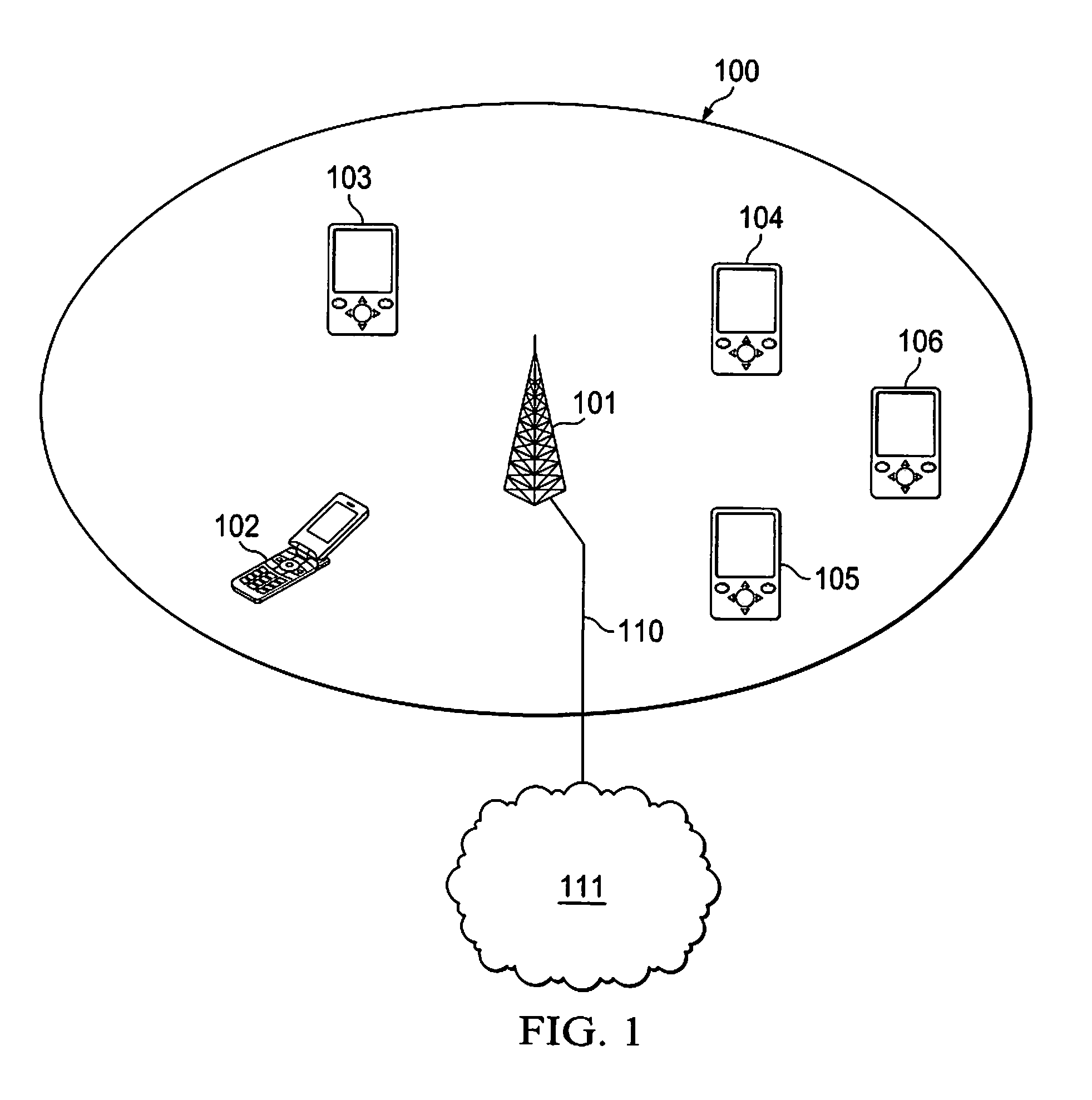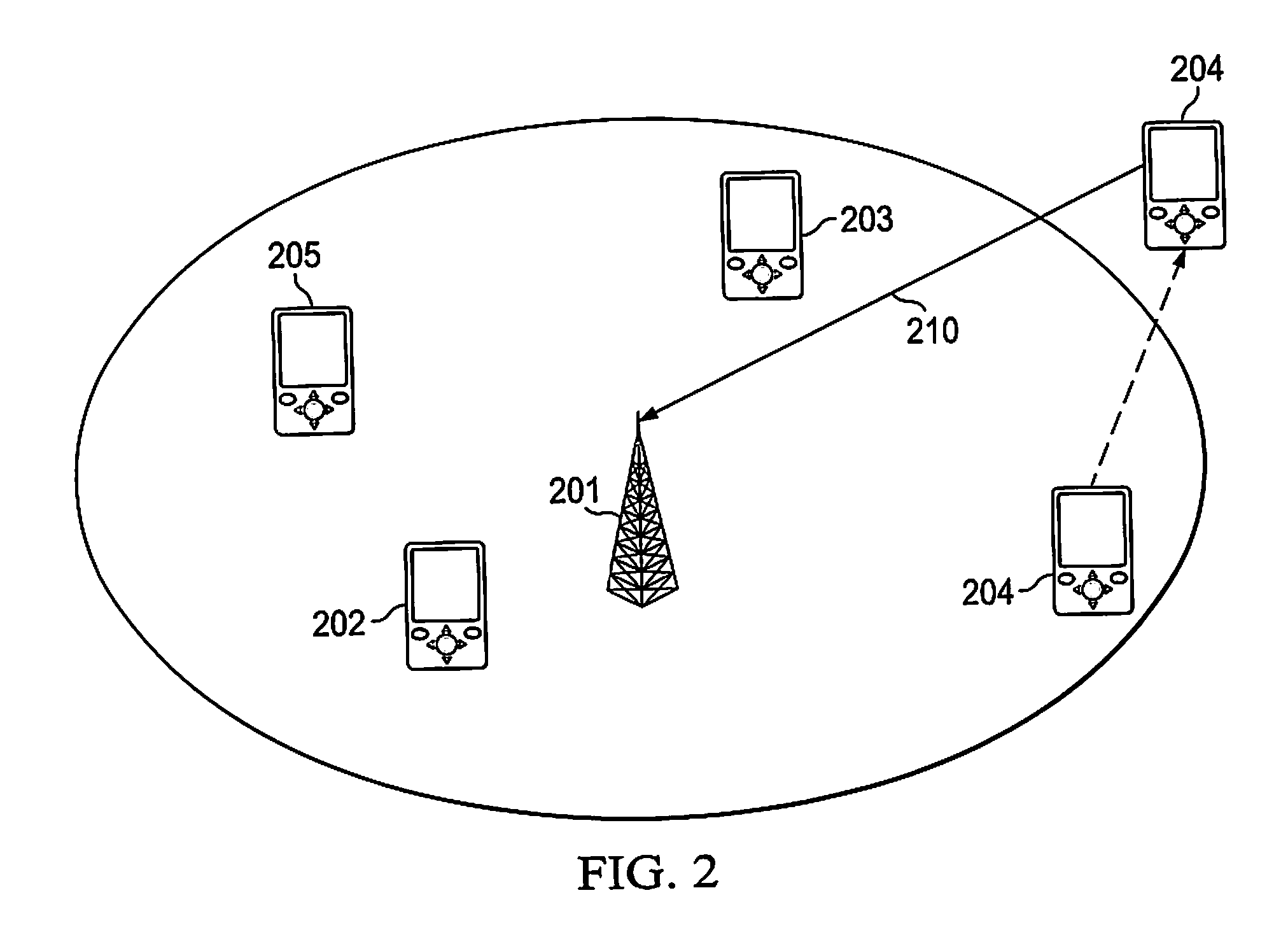Power control in a communication network and method
a communication network and power control technology, applied in the field of radio power control in a wireless network, can solve the problems of many problems such as high bandwidth demand of content of many services, many problems may arise in building infrastructure installations, and human beings are very sensitive to this kind of latency problems, so as to reduce hidden nodes, reduce power consumption, and minimize interference problems
- Summary
- Abstract
- Description
- Claims
- Application Information
AI Technical Summary
Benefits of technology
Problems solved by technology
Method used
Image
Examples
Embodiment Construction
[0082]FIG. 1 illustrates a schematic network topology according to the present invention, wherein a radio coverage cell 100 is determined from an access point 101, with “access point” is meant a central transceiving unit with which mobile stations communicate and gain access through to a packet based network, such a central unit may also be described as a connection point, wireless gateway, or a base station. In the cell, one or several mobile units 102, 103, 104, 105, and 106 may communicate with the access point 101 using a wireless communication application. The access point is connected 110 in turn to an IP network 111 or any similar packet based network through any connection means as understood by the person skilled in the art. The connection means 110 may either be a wired fixed line connection or a wireless fixed line connection.
[0083]In order to reduce the risk of traffic collisions in a wireless network, different collision avoidance protocols have been developed. One such...
PUM
 Login to View More
Login to View More Abstract
Description
Claims
Application Information
 Login to View More
Login to View More - R&D
- Intellectual Property
- Life Sciences
- Materials
- Tech Scout
- Unparalleled Data Quality
- Higher Quality Content
- 60% Fewer Hallucinations
Browse by: Latest US Patents, China's latest patents, Technical Efficacy Thesaurus, Application Domain, Technology Topic, Popular Technical Reports.
© 2025 PatSnap. All rights reserved.Legal|Privacy policy|Modern Slavery Act Transparency Statement|Sitemap|About US| Contact US: help@patsnap.com



